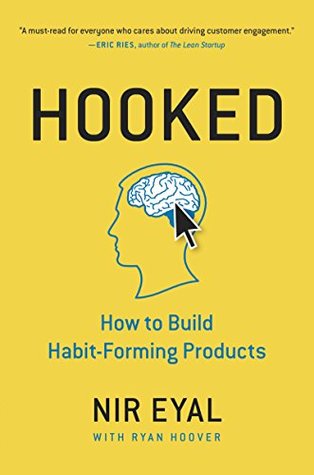More on this book
Community
Kindle Notes & Highlights
A habit is when not doing an action causes a bit of discomfort.
These services seem at first to be offering nice-to-have vitamins, but once the habit is established, they provide an ongoing pain remedy.
However, for companies building technology solutions, the greatest return on investment generally comes from increasing a product’s ease of use.
visually onerous.
Yet the perception of scarcity changed their perceived value.
Every behavior is driven by one of three Core Motivators: seeking pleasure and avoiding pain; seeking hope and avoiding fear; seeking social acceptance while avoiding social rejection. Ability is influenced
Variable rewards can be found in all sorts of products and experiences that hold our attention. They fuel our drive to check e-mail, browse the web, or bargain-shop. I propose that variable rewards come in three types: the tribe, the hunt, and the self. Habit-forming products utilize one or more of these variable reward types.
Variable rewards are not magic fairy dust that a product designer can sprinkle onto a product to make it instantly more attractive. Rewards must fit into the narrative of why the product is used and align with the user’s internal triggers and motivations. They must ultimately improve the user’s life.
The magic words the researchers discovered? The phrase “But you are free to accept or refuse.”
the product designer must consider whether users have sufficient motivation and ability to engage in the intended behavior. If users are not doing what the designer intended in the investment phase, the designer may be asking them to do too much. I recommend that you progressively stage the investment you want from users into small chunks of work, starting with small, easy tasks and building up to harder tasks during successive cycles through the Hooked Model.
In this quadrant the sustainable business is not purely the game, the song, or the book—profit comes from an effective distribution system for getting those goods to market while they’re still hot, and at the same time keeping the pipeline full of fresh releases to feed an eager audience.
If the innovator has a clear conscience that the product materially improves people’s lives—first among them, the designer’s—then the only path is to push forward. With the exception of the addicted 1 percent and other protected classes like children, users bear ultimate responsibility for their actions.
It is a process inspired by the “build, measure, learn” methodology championed by the lean start-up movement.
If you are building a social networking app like Slack or Instagram, you should expect habitual users to visit the service multiple times per day.
Let’s say that you’ve identified a few users who meet the criteria of habitual users. Yet how many such users are enough? My rule of thumb is 5 percent. Though your rate of active users will need to be much higher to sustain your business, this is a good initial benchmark.
Instagram discovered that its low-tech filters made relatively poor-quality smartphone photos look great. Suddenly taking good pictures with your phone was easier; Instagram used its newly discovered insights to recruit an army of rabidly snapping users. With both Pinterest and Instagram, tiny teams generated huge value—not by cracking hard technical challenges, but by solving common interaction problems.


